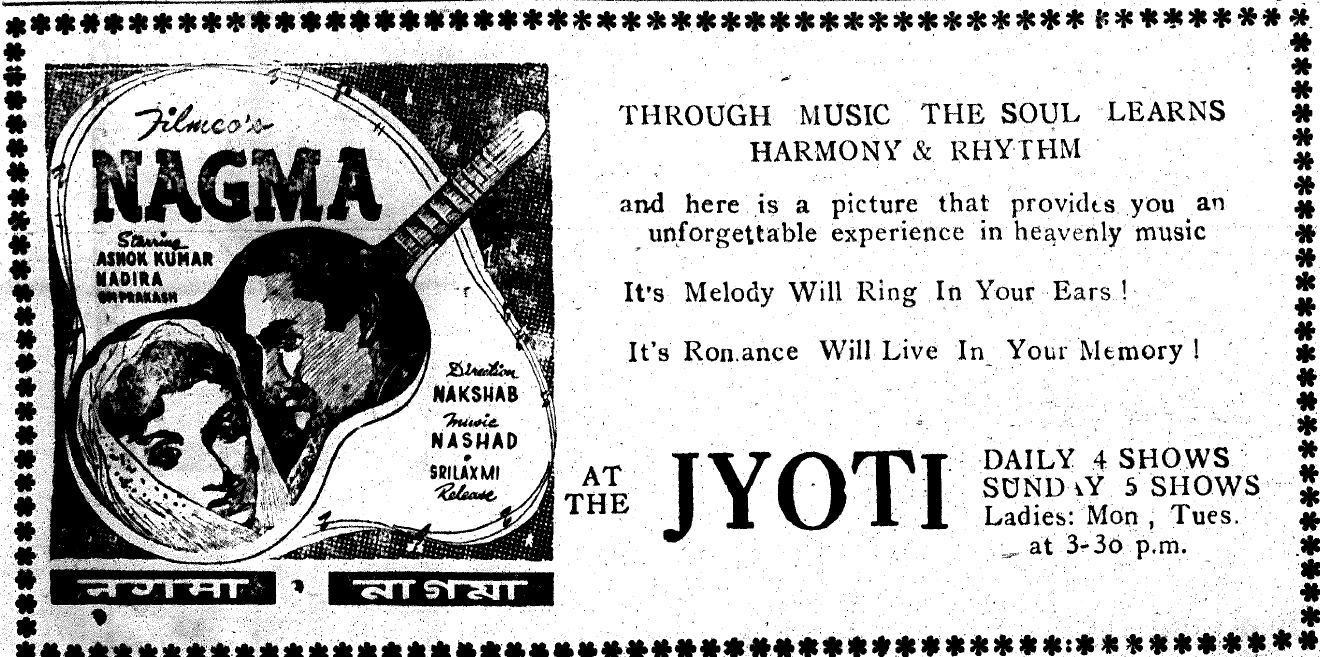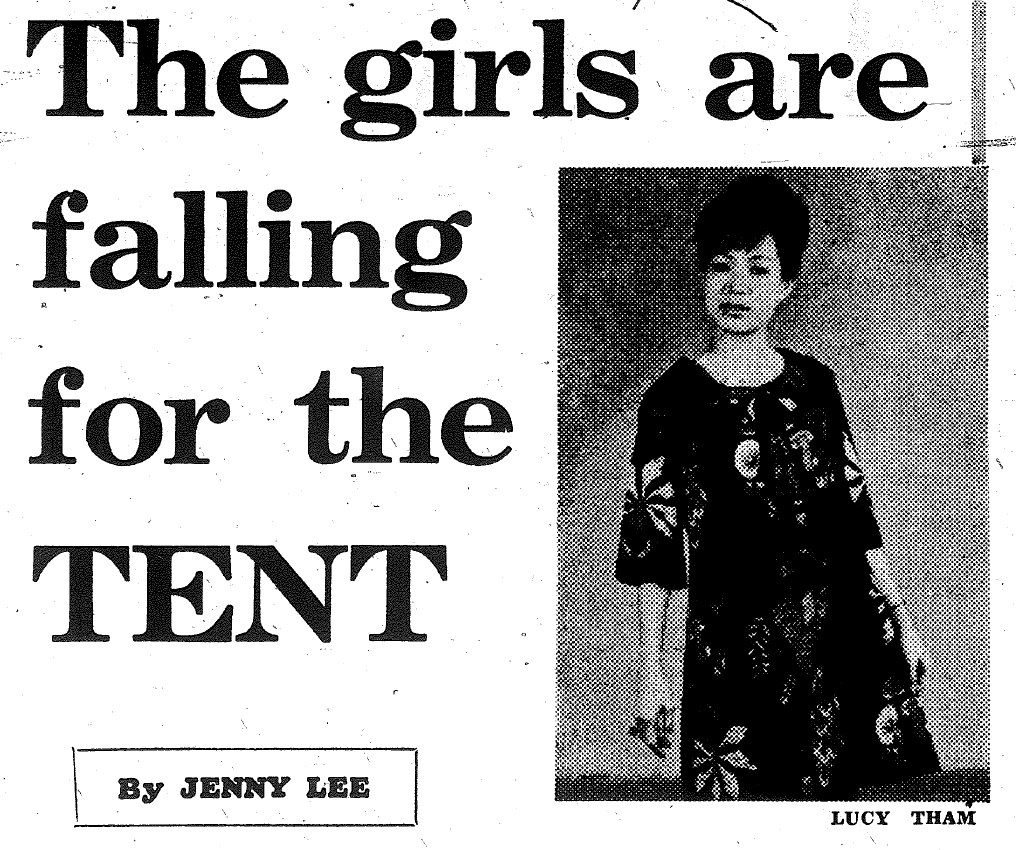I was looking at The Nation newspaper from Burma for 22 October 1948 when I came across this article about “Viet-Nam Music.” It is supposed to be a “broadcast talk” by a certain Mr. Hoang-Thinh from Viet-Nam News Service.
I remember reading in the last chapter of Mark Philip Bradley’s Imagining Vietnam and America: The Making of Postcolonial Vietnam, 1919-1950 that the Việt Minh had some kind of diplomatic or public relations presence in Rangoon during this period. So I’m guessing that this is what this “Viet-Nam News Service” was.
In any case, Hoang Thinh gave a fascinating overview of the history of modern Vietnamese music. It’s worth quoting the entire piece.
Here it is:
The history of the development of Viet-Nam music reflects the development of the Viet-Nam people. Our present music mainly voices our struggle. It is part of our struggle for national liberation.
Our country lies between two great peoples and two great cultures: the Chinese and the Indian. Through many centuries, the Viet-Nam people struggled against former emperors of China in the North and Champa in the South, the latter having Indian civilization.
The music of these two countries deeply influenced ours. Chinese and Champa music mixed with the local music. The development of music at this stage took two courses: firstly, one adopted by the high classes which was a simple transplantation of Chinese music; secondly, that which got intertwined with local music, and assumed popular forms.
This music, people used during their daily work and their popular festivals, for instance the “Hat Cheo,” the “Ho,” the “Hat trong quan,” etc.
The first type did not survive and disappeared with the invasion of Western music. The second which continued, got a fresh impetus of progress when Viet-Nam regained her independence.
The impact of Western music also took the same course. Western music invaded our country with the French conquest. It is not Western classical music but screen-movie-music, abstract, extravagant in romance love. It was popular among the young people in the cities but never penetrated the villages.
Under the impact of Western music, people used new instruments such as the violin, guitar, piano, etc. . . and solfeggio as the new method to write down music.
Insurgent nationalism powerfully asserted itself in music, just as it did in other branches of art and culture. This nationalism aimed at providing the young generation with truly Viet-Nam songs. Musicians in the Western school started composing short pieces on new airs.
At the beginning, the subjects were romantic, predominantly expressing love songs, but under the patriotic impact, they got more and more healthy, and began to appeal to a vague nationalistic feeling among the people.
The first youth songs were composed by Hoang-Quy, a boy-scout leader, “Musician band” of the Viet-Nam Students’Unionin 1940 marked a new stage. The awakening of nationalism in Viet-Nam that year, was stimulated by the defeat of France in Europe. The opportunity appeared for the Viet-Nam people to break off the fetters and fight efficiently the impending Japanese aggression.
Luu-Huu-Phuoc, a University student, composed “marching songs” and “patriotic songs” composed by Luu-Huu-Phuoc received unprecedented ovation all over the country. The most popular marching song was the “Call to Students” composed by the same author in 1940.
In 1944-45, other revolutionary songs made their appearance from the underground movement led by the Viet-Nam Independence League. The “Down With Facism” of Nguyen-Dinh-Thi, the “Going to the Front” of Van-Cao which later became the National Anthem of the Democratic Republic, were the most outstanding.
It was to the strains of these revolutionary songs that the combatants of the Viet-Nam Liberation Army marched to attack Japanese posts. When the August Revolution came back to the capital: the people heard these resistance songs sung by them with admiration and pride, songs which were prohibited during the whole period of French and Japanese domination.
On December 19, 1945, the Resistance war broke out throughout Viet-Nam. Music accompanied the people to the battle-front. The people needed music that united them, inspired them, and made them make supreme sacrifices for the cause of defense of newly-won independence.
It is not exaggerating to say that music is mixed up with day to day life in Viet-Nam. The new music is the manifestation of the rebirth of Viet-Nam. Each mass organization has its own song, such as the “Children Song,” the “Call to Viet-Nam Women,” the “Viet-Nam Workers’ Song,” the song of “Popular Teachers” who fight illiteracy.
Almost every activity is illustrated by a song. When the campaign of collecting clothes for soldiers started, a song was composed: “Clothes for Servicemen.” The birthday of President Ho-Chi-Minh in 1946 was marked by the famous “Long Live Ho-Chi-Minh.”
But these new songs are more or less Western inspired. The people like them because of their patriotic words but find it difficult to sing. Side by side the popular folk songs were revived. These popular folk songs are re-oriented with new contents for patriotic needs, calling village youths to the battlefront or against the traitors.
Such songs are widespread among the people. This development has brought about a new experience and a richer understanding of the people and music, and their influence on each other.
In light of this experience, the propaganda department set up theatrical troupes which used old forms of playing popular songs with a new content. The subjects are mainly the needs of the Resistance war and needs of reconstruction, such as the grow-more-food campaign, the campaign against illiteracy.
The march of time called upon the musicians to re-orient their art to suit the new conditions and the new needs. The musicians are striving to rise up to the occasion and composed real Viet-Namese music. For this, they study the popular songs, adopt from traditional music the truly Viet-Namese features, and combining them with the best of foreign musical heritage, are patiently modifying and evolving their own music.
In the last Cultural Congress, Viet-Nam musicians called for a patriotic competition for composing truly Viet-Namese music which would suit the masses. Most of the recent songs display a promising future for the development of music.
We hope that these efforts will succeed in building a real Viet-Namese music reflecting the life of our people, their hatred against foreign aggression, their determination to win freedom and democracy and thus make a humble contribution to the treasury of world culture.












































